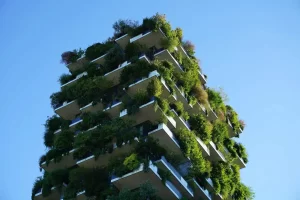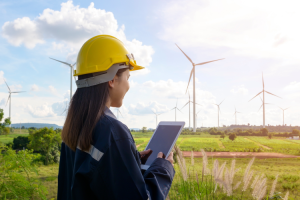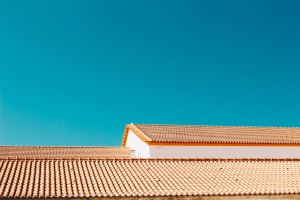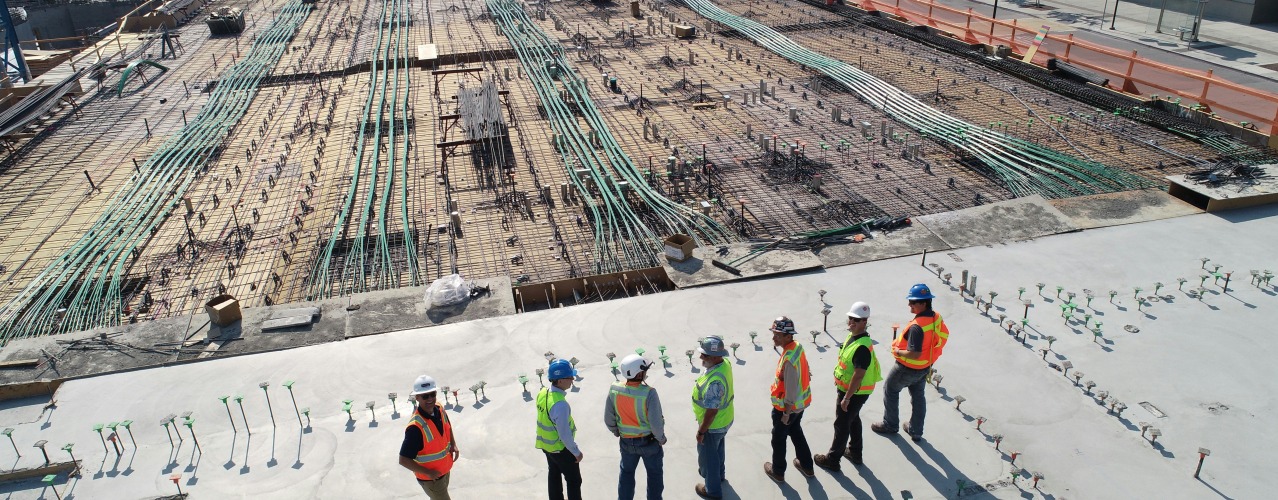

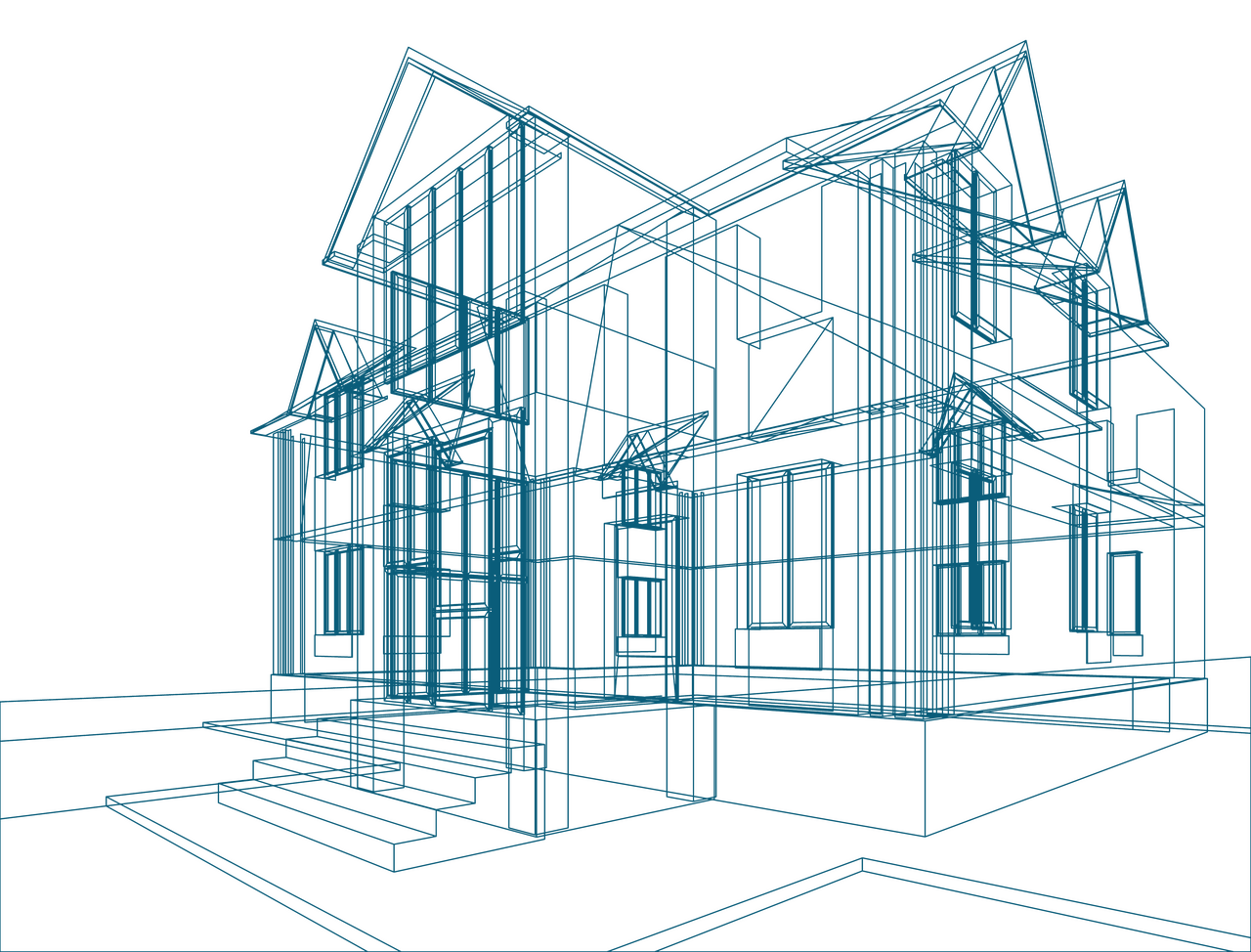
Market report
Sustainable construction trend
Gain valuable insights into the European architectural industry with the European Architectural Barometer market report. Stay informed about key trends and factors influencing architects' decisions. Visit the link for more information.
Blogs I published 20 June 2024 I Dirk Hoogenboom
Sustainable Construction – How and Why This Industry Is Getting Greener
Climate change is a pressing multi-sector challenge that thoroughly impacts our way of life, constantly making us revaluate how we do things. This is particularly true in construction, a high-impact sector where day-to-day operations mean inefficient practices with a hefty carbon footprint. So what can be done? Turns out – plenty!
The truth is, the way we’ve built our world so far isn’t necessarily how we need to continue building it for the future and that’s exactly where sustainable construction comes in. A comprehensive shift in traditional practices, it’s all about building smarter, minimizing our impact on the planet and creating structures that are aesthetically pleasing, healthy and efficient for generations to come. Let’s look at the low-down.
What is Sustainable Construction?
Oftentimes, industries use “going green” flippantly and vaguely. So to put things into perspective construction-wise, think about your building. How efficient is it? Is it made of renewable materials? Does it make use of natural light? Are there significant temperature swings, are the bills sky-high and the power grid overwhelmed? Is the air quality just right or are spaces poorly ventilated? Can rainwater naturally soak into the ground or does it run off impervious surfaces? How many trees or plants are there and does heat radiate off of concrete roofs and pavements?
Alternatives that seem sound and responsible – energy efficiency, resource conservation, harmony with nature and healthy living environments – that’s green construction. Sustainability in this sector refers to buildings created to be environmentally responsible and resource-efficient throughout their lifecycle, meaning a win-win: it minimizes negative impacts on the environment and enhances the health and well-being of its occupants.


The Main Benefits of Sustainable Construction
Admittedly, at first glance, the construction industry and a net-zero world don’t seem like a natural fit. It’s hard to imagine a loud and massive construction site going hand-in-hand with eco-conscious practices, but with climate change demanding swift action, that’s exactly where we’re headed. A forward-thinking approach focused on a triple bottom line is already underway, so let’s unpack how the green transition is changing construction.
Economic benefits
There’s no other way to put it – sustainable construction pays off. Green buildings might have a higher upfront cost, but they more than make up for it in lower energy bills, reduced maintenance needs and increased property value. They attract environmentally conscious tenants and benefit from government incentives. Focusing on resource efficiency and minimizing environmental liability, green construction also drives innovation in materials, technology, and processes, creating new jobs along the way.
Social benefits
Eco-friendly building goes beyond cost-effectiveness and appealing design. It also impacts people and communities. First off, natural light, reduced air pollution and quality materials have been known to improve well-being by subtly addressing mental and physical health needs of the occupants. To widen the scope, think rooftop gardens, living walls or quiet pocket parks that increase both personal satisfaction and drive group cohesion. Even more so, a building well integrated into the local infrastructure promotes a sense of community and responsibility by inspiring others to adopt greener living habits. Communities that lead by example pave the way for a sustainable future.


Environmental Benefits
No surprises here, the overarching emphasis in sustainable construction is a highly reduced environmental impact. Building green means building efficiently and this efficiency thinks about the entire lifecycle of a building, from using recycled or locally sourced materials in construction to optimizing the design for natural ventilation and minimizing energy use during operation. This ensures development is mindful of biodiversity, helps conserve natural resources, reduces greenhouse gas emissions and preserves energy.
How is Construction Getting Greener?
Sustainable construction sounds great and the end-benefits of going green are evident. But let’s talk specifics: what exactly does it mean for the industry and how does it work from the ground up?


Site Selection and Planning
While eco-friendly materials and energy efficiency grab the spotlight, sustainable construction actually begins by choosing the right location. A decision that seems all too trivial, but make no mistake – a well-considered site is key for long-term environmental resilience.
Minimized disruption
The trick is to find a site that aligns with your project goals without being at odds with the natural setting or local infrastructure. This means consulting engineers, urban planners, environmentalists and local government to land on a functional location for brownfield redevelopment, infill development or a new addition to the landscape.
Accessibility and Community
Sustainable construction takes people and their living habits into account. How do they get around? Is your new building near public transportation and friendly towards pedestrians? Does it have bike lanes? Can people run everyday errands on foot? Are there parks, rec-facilities or libraries to stimulate participation in all groups? All these will reduce reliance on cars, by extension congestion and emissions, while promoting an active and vibrant community.
Orientation
A building’s orientation is key in sustainable construction. By strategically positioning windows and considering the sun’s path, natural light, heating and ventilation can be maximized, reducing reliance on mechanical systems. This is called passive design and it harnesses nature’s power for a more energy-efficient building.
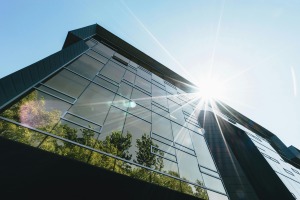

Operational saving
Not only will an eco-friendly site benefit the environment, it’ll cut down on your development costs: spend less managing stormwater runoffs and landscaping, benefit from tax breaks and grants, increase property value and future-proof by investing in stricter standards early on.
Building Materials
The materials used in green building minimize environmental impact throughout their lifecycle. Recycled steel, crushed concrete, and salvaged wood reduce environmental burdens by lowering the demand for new raw materials and energy consumption. Locally sourced materials cut emissions and support the local economy. Sustainable resources like bamboo and mycelium offer circular, low-impact, and long-lasting solutions. Bamboo is rapidly renewable and durable while mycelium is biodegradable and compostable, both contributing to a sustainable and resilient construction process.
Water Conservation
A staple of net zero efforts, responsible water stewardship is a key concern in sustainable construction. It’s not just about reducing environmental impact; it’s about making smart choices that save money and create a more sustainable future for all. Here’s how to make every drop count.
Efficient Water Use
Sustainable buildings prioritize low-flow fixtures in toilets, faucets and showerheads that use less water without compromising performance. Smart irrigation systems use sensors and weather data to create personalized watering schedules to avoid overwatering.
Rainwater Harvesting
Harvesting systems store rainwater collected from roofs for later use, reducing reliance on municipal water supplies. Green roofs reduce runoff, provide insulation and lower energy costs.
Greywater Recycling
Greywater systems collect used water from sinks, showers, and washing machines. After treatment, this water can be reused for non-potable applications like toilet flushing or irrigation, conserving water and easing the strain on sewage systems.
Green Infrastructure
Permeable surfaces like green roofs, special gravel or urban wetlands allow water to seep through the built environment, reducing runoff and promoting groundwater recharge. This natural stormwater management approach sidesteps traditional grey infrastructure.
Water Management Systems
Advanced monitoring systems track water usage in real-time, quickly identifying leaks and inefficiencies. Building management can use this data to optimize water use and implement targeted conservation measures.
Energy Efficiency
As you’ve read, a lot goes into making a building green. But nothing says eco-friendly quite like energy saving, so construction is turning to strategies that reduce consumption and enhance efficiency. Let’s look at some of them.


Insulation and Sealing
The duo that usually comes up first in sustainable construction is insulation and heating. A strong thermal barrier, where insulation provides the warmth while sealing closes drafts, can be further optimized with double-glazed windows that reduce heat loss during winter and heat gain during summer. Proper roof and wall insulation with materials like fiberglass, foam board or spray foam helps maintain a consistent indoor temperature. This benefits everyone – year-round comfort for occupants, lower energy bills for owners, a reduced carbon footprint for the environment.
Efficient HVACs
While those first two let HVAC systems take a breather, modern solutions make them smarter, more energy-efficient and eco-friendly. These systems now use advanced technology like variable speed motors that adjust their power based on demand. Smart thermostats learn your preferences and automatically adjust the temperature, ensuring comfort without wasting energy. Energy recovery ventilators capture heat or cool air that would normally be exhausted, recycling it back into the building. You can breathe easy – no more blasting the AC whenever and wasting energy in the process.
Renewable Energy
No need to rely on the grid. Generate your own, clean, renewable energy and reduce dependence on fossil fuels by incorporating sources like solar panels or wind turbines. Through them, the benefits go beyond a clear conscience: energy needs can be met more sustainably, lowering greenhouse gas emissions and reducing the environmental impact of energy consumption.
Smart Tech
Sustainable construction with smart building technology offers a compelling proposition: a reduced environmental impact through optimized energy use. A network of sensors monitors everything from lighting and temperature to security and water usage, in real-time. Feeling a bit chilly? The system automatically adjusts the temperature. Leaving in a rush and the lights are on? Smart sensors will power them down. The result? A personalized environment that adapts to your needs and takes care of the environment.
LED Systems
Lighting systems that rely on super-efficient LED bulbs are a bright idea for sustainable buildings – they last longer and go easy on the energy bill. Smart sensors and daylight harvesting work together to ensure lights are only on when needed, maximizing natural light whenever possible. Sustainable lighting systems strike the perfect balance.
Challenges in Sustainable Construction
The future is green and construction needs to catch up. A shift to sustainability doesn’t come cheap and is a floor-to-ceiling retrofit of traditional practices, which means that it’s a tough sell even to the most benevolent. But it’s time to move beyond the hesitation because it’s not a trend – it’s a responsibility. So getting with the program is both urgent and doable, especially with respect to the three most commonly cited hurdles.
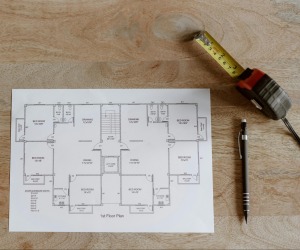

Higher Initial Costs
A common concern with any green transition is the high upfront cost, especially compared to traditional methods. Developers may find themselves discouraged to invest in sustainable practices if they’re unsure of the return on their investment. But here’s the thing – eco-conscious building leads to significant long-term savings. Firstly, they’re energy-efficient powerhouses. Efficient insulation, smart appliances and renewable energy spell out lower energy bills year after year. Secondly, sustainable construction relies on high-quality, durable materials that require less maintenance and replacement over time, which means fewer headaches down the road. Lastly, many governments are recognizing and rewarding initiatives by offering incentives that can offset some of the cost.
Lack of Awareness and Education
A lack of widespread knowledge on the matter ripples out, hindering the growth of sustainable construction. From developers and architects to investors and laborers, many stakeholders lack the understanding of sustainable practices and their long-term benefits. This knowledge gap makes it difficult to implement sustainable projects. So, the cycle perpetuates itself: with fewer skilled professionals in sustainable construction, there’s a limited pool of qualified individuals to train the next generation, further hindering progress. However, this doesn’t have to be permanent. By increasing dialogue, education and training programs, we can bridge this gap. Equipping stakeholders with the necessary information is sure to empower the workforce and ease the transition towards sustainable building practices.
Red Tape for a Green Revolution
Getting tied up in paperwork is everyone’s nightmare, which goes double for emerging practices in construction. Regulation on sustainability is both inadequate and inconsistent so it often falls short when addressing actual building practices. Securing approvals and clearances can be lengthy and expensive so the additional time and cost seeps into project realization, with certification being a free-for-all. A lack of universally recognized standards further creates confusion, resulting in a system that discourages progress instead of promoting it. By simplifying the regulatory process and establishing clear guidelines, construction will head in a direction that fosters the adoption of eco-friendly practices.
Construction Consulting Services for You
We provide tailor-made market research and off-the-shelf reports, both B2B & B2C, qualitative and quantitative. Here are some you might be interested in
Monitor and improve client relationships to drive loyalty and repeat business in construction.
Map out key interactions and pain points to refine the overall construction experience.
Identify the aspects of service or product that most impact satisfaction in construction projects.

Read more

Fresh Insights Await
Our relevant reports
Delve into the newest findings across various market segments, crafted for a cutting-edge overview. Explore our insightful reports, brimming with up-to-date data, trend analyses, and in-depth examinations, all tailored to provide you with a comprehensive understanding of the current market dynamics.
Construction
Home Improvement
Installation
Special reports










